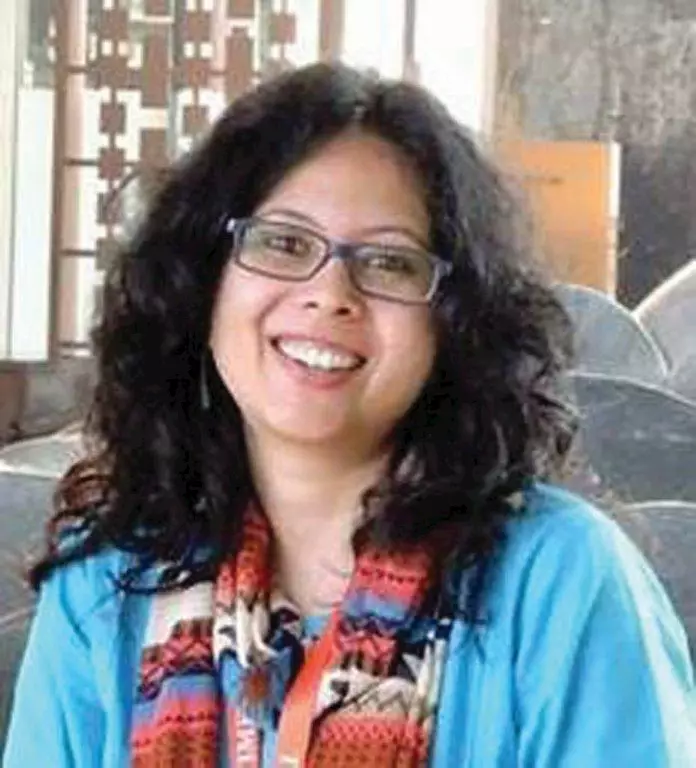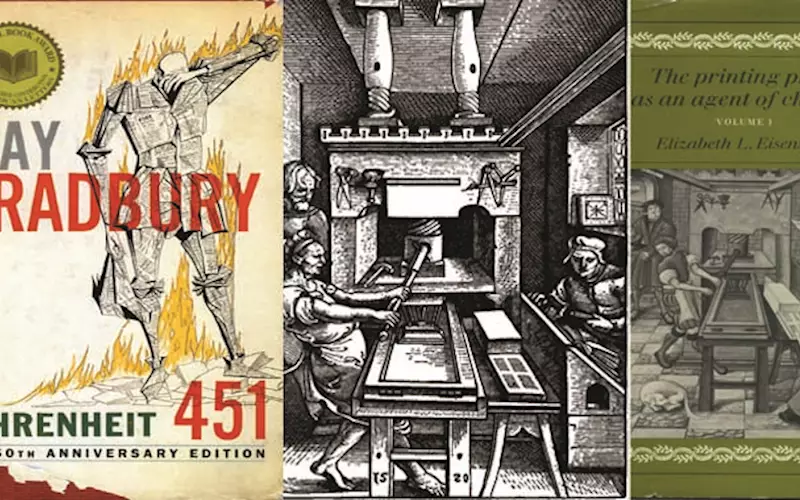The untold chronicle of the history of the book
Chandrani Chatterjee, who teaches a course, History of the Book, at the Department of English, Savitribai Phule Pune University, explains why we need to study book history and how to go about it.
29 Nov 2016 | By PrintWeek India
Where do we start?
For the last four decades or so, Book History has emerged as a discipline in its own right. Yet, introducing this course as a part of the post-graduate curriculum, I did face problems in justifying such a course for students in the humanities. I teach at a post-graduate department in one of the premier universities in India – Savitribai Phule Pune University (formerly University of Pune) and I teach students enrolled for the masters programme in English. The first question I faced was how does this help students of literary studies? A valid question, yet while pursuing my masters in English from Jadavpur University Kolkata I was introduced to History of the Book. Jadavpur remains the only university in India to offer this course for post-graduate students. So while revising the syllabus in 2010, I thought it impending that this course be introduced at the university where I was teaching.
So what is the course? The History of the Book studies the production, circulation and consumption of books as material objects. The various agents in the process of the making of the book, the material components, the socio-cultural and political circumstances, among many others, enable us to grapple with this rather complex entity - the book. Moreover, the journey of the book as a material object does not end with the book coming into being. Other important factors this discipline helps understand are the circulation and consumption of this material artifact. In chalking out this ‘communication circuit’ as a primary means to re-thinking the book as a social and cultural object, History of the Book envisions a different politics in understanding the variety of factors that generally gets overlooked in a literary or critical enquiry.
The unacknowledged revolution
Book history may be broadly divided into three phases – production, circulation and consumption of the book as a material object. The production phase concerns the material ingredients that go into the making of the book – paper, ink, printing, binding and others. Each aspect of the book production phase is important, given the various agencies involved and their interconnectedness. For example, the making of paper – its origin in China and the evolution and transformation that papermaking has undergone over time becomes not only a phase in understanding the making of the book but also a plausible area of independent research.
Perhaps one of the most researched phases in book production is the advent of printing and the consequential repercussions print had on the socio-cultural milieu. Print inevitably became an agent of social change and needless to say, it was obvious that the print phenomena could not be studied in isolation. Thus, Elizabeth Eisenstein wrote her monumental The Printing Press as an Agent of Social Change, harping on the general neglect in acknowledging the impact of the print phenomena. She appropriately titles the opening section of her book ‘The Unacknowledged Revolution.’ One of the offshoots of studies related to printing and its technicalities is also in understanding and appreciating the technological shifts that printing has undergone since Gutenberg. From Gutenberg’s fascinating invention of the movable type to later developments in the electrically enabled methods of printing, the basic objective of printing has always remained the same – reproduction for mass consumption.
The shift from the age of the manuscript to printing is perhaps difficult to imagine from the vantage point of the 21st century where we tend to take things for granted. However, the impact of this shift in the time of Gutenberg was stupendous. From a scriptorium of scribes working at their desks copying books which could take months on end, Gutenberg’s printing press enabled reproduction at a pace unimaginable before.
Apart from speed, the other aspect that also underwent change was the uniqueness of each copy. Print made each copy look identical. So while the reproduction was unimaginably rapid, there was no uniqueness to the works reproduced. Rather, print facilitated a ‘mechanical reproduction’ (to use a phrase popularised by Walter Benjamin) which was based on the basic idea of standardisation. Though standardisation of any kind does have its merits, it is also associated with larger and more crucial questions related to art and aesthetics and the uniqueness of art objects.
In the early days of printing, however, one finds an interesting amalgam of the scribal and the print era coexisting. A prominent and much discussed example would be Gutenberg’s Bible. Also known as the 42 line Bible, it was the first major work to be printed using moveable type. Gutenberg’s Bible illustrates a moment of technological transition – the scribal techniques and the printing innovations coexisting harmoniously. The embellished and elaborate border designs were added by hand after the page was printed.
However, this co-existence was but transitory and with the gradual ascendancy of the print culture there were a gradual decline in the uniqueness quotient and all copies of the same book looked exactly the same. This has come to define the printed book as we know it today. This is often upheld as a major quotient in the democratisation of knowledge – mass reproduction leading to cheap per unit price of books which no longer remained the elite’s purchase of pride and social status.
The act of reading
The next phase in the communication circuit is the circulation of the book. The agents in the circulation process include traders, shippers, pirates or book peddlers in the days of yore, and publishing houses, book distributors, book shops and several other agents in the field today. Just as the facilitators in the circulation process are important at this stage, so are those who restrict circulation – the censors and the agents in the surveillance process. Censorship in an interesting way does not stop circulation. In fact, censored books find strange and new ways to circulate. A fascinating depiction of this can be seen in François Truffaut’s rendition (1966) of Ray Bradbury’s dystopian fiction Fahrenheit 451 (1953). Fahrenheit 451 is the temperature at which paper catches fire. Both the versions use this as a point of departure to discuss larger social, cultural and political problems haunting the society at large.
Bradbury and Truffaut depict an autocratic regime where books are being burnt as they are considered a threat to the government. Anyone who is found reading or in possession of a book is hunted, libraries are being burnt. In such a regime too books do keep circulating – the ‘book-people’ help preserve books by memorising them and finally passing it down to the next generation by word of mouth. Utopian and symbolic as it may appear, the ‘book-people’ become instrumental in resisting tyranny and censorship by carrying the books within themselves when material books could no longer circulate.
The circulation stage, being the intermediary stage between production and consumption is imbued with the different politics that affect and assist in the journey of the book. The crucial role of the politics of circulation often paves the way for the reception of the book at the hands of the readers.
Book historians argue that circulation often determines the nature of consumption and its aftermath. Needless to say, no reading process can be understood in a vacuum – in fact, in determining and locating the context of a book – the book historian becomes interested in unraveling the circuitous and often unbelievably complicated paths books travel to reach the reader. In our naiveté as readers, we often tend to overlook such paths and their significance. The book historian pays attention to these otherwise taken for granted understandings of the journey of the book.
The reader who receives the material book is not to be mistaken as a site of reception alone. The reader is also a site of change and transformation. This transformation happens at least at two levels – one at the level of interpretation, the text changes with each reading. This we have learnt primarily from the reader response theorists who propounded the idea of the text not meaning anything in itself until it is read and discovered by the reader. The other level at which reading can be looked upon as active is by coming to terms with the fact that the writer is always first a reader. Book historians have taken this a step further to analyse the agencies involved in the reading process – not just that of individual reading but that of communal reading – drawing on public and circulating libraries as spaces of negotiations and transformations. These, however, are left out in a general approach of the acts of reading. In fact, one might say that if reading brings the communication circuit to a full circle, it also becomes the starting point of another cycle – with the reader as the writer. Italo Calvino’s If on a Winter’s Night a Traveller cleverly depicts the plurality of readers and acts of reading harping both on the physicality and materiality of the reading process as also on the symbolic and metaphorical ramifications. The novel brilliantly explores the crafts of production, circulation and consumption of a work of fiction. In fact, Calvino’s fictional world can very well be read as a ‘history’ of the history of the book!
Book history in India
History of the Book in India still remains an understudied area. Academia seems wary of where and how to introduce modules for courses on History of the Book. Moreover, a dearth of experts available in teaching courses on History of the Book may be cited as another reason for the usual unwillingness to introduce the discipline as a part of the post-graduate curriculum. In many cases, there is also the fear of the course being too technical.
To bridge this lack, Professor Swapan Chakravorty, the Tagore Chair at Presidency University, and Professor Abhijit Gupta of the Jadavpur University started the Book History in India series. So far, three edited volumes in this series has been published – Print Areas (2003), Moveable Type (2008) and New Word Order (2011).
One of the problems identified by the series editors as a probable reason for lack of interest in Book history in India is the dearth of resources and the often sheer indifference and ignorance with which Indians handle documents and print artifacts worthy of preservation. This has unfortunately been a major setback to scholars in locating archives and deducing viable conclusions. Needless to say, a large part of book history methodology is archival in nature and increasingly it is being realised that our tools and techniques of preservation should be honed to facilitate research in the field.
The other basic concern remains the cultural diversity of India. The book history methodologies in Europe or America prove of little help in a country like India – linguistic and cultural differences often being difficult to accommodate in a homogenous discursive framework. Though the British Raj still remains a major reference point yet that can in no way be regarded as the complete story. The amazing degree of mobility with which different agents in the book trade in the 19th and early 20th centuries traversed the linguistic and regional divides is a story yet to be told. But here again, the stumbling block is to assemble data to help create cartographies of the book in India.
With this realisation, scholars and institutions have started mammoth digitisation projects in archiving and preserving data that are likely to get lost and/or destroyed over time. Project Bichitra is one example. The School of Cultural Texts and Records, Jadavpur University, Kolkata, with financial assistance from the Central government, has successfully created an online variorum of Rabindranath Tagore’s works.
Several similar projects of collating, creating checklists, catalogues, bibliographies, time-charts and so on about the various personnel associated with the book trade remains the need of the hour and some considerable research has been undertaken in the last decade or so. The British Council’s ‘Endangered Languages Project’ has been supportive of such endeavours. What is visible is an awareness about the need for preservation and conservation and this is not restricted to print or literary matter alone. In fact, the efforts in preserving data in music and other cultural forms like theatre and folk arts is also moving alongside the interest in textual preservation.
Apart from the Book History in India project, scholars like Anindita Ghosh, Priya Joshi, Francesca Orsini and Ulrike Stark, among others, have contributed significantly to locating and telling stories of book trade in India. Anindita Ghosh’s Power in Print (2006) examines the popular print phenomenon in nineteenth century Bengal. Moving away from the elite and bhadralok printing of the Bengal renaissance, Ghosh exhibits the print culture and its ramifications of the non-elite and generally marginalised section of Bengal. Priya Joshi’s In Another Country (2002) examines the coming of the novel as a form in colonial India. Combining methods of book history and literary insights Joshi unravels an unusual history of India’s encounter with the British. Francesca Orsini’s Print and Pleasure (2009) explores the production, circulation and consumption of popular literature in colonial North India opening up a plethora of data and sources offering a fresh perspective to the detective novel industry and several oral genres including the qissa. Ulrike Stark’s An Empire of Books (2008, 2009) studies the Naval Kishore Press and the diffusion of the printed word in colonial India. The legendary Naval Kishore Press of Lucknow, established in 1858, and its contribution to the commercialisation of print in nineteenth century South Asia was a largely uncharted area of research. Stark’s detailed analysis helps unearth the yet unacknowledged history of cultural production of the 19th century.

Dr Chandrani Chatterjee teaches English at Savitribai Phule Pune University (formerly University of Pune). She holds a PhD from IIT Powai and was awarded the prestigious Fulbright Fellowship in 2012 to UMass, Amherst USA. She was also the recipient of the NIDA fellowship to Italy in 2014.














 See All
See All